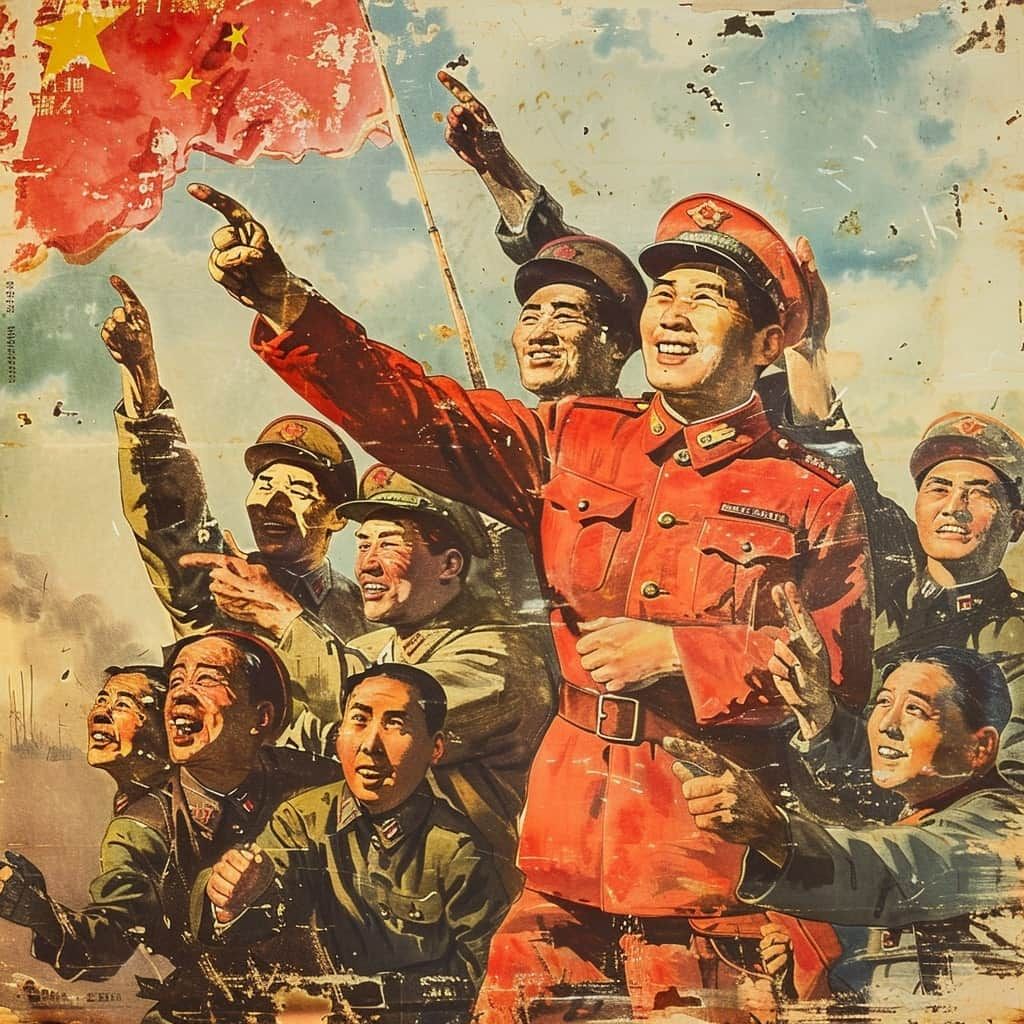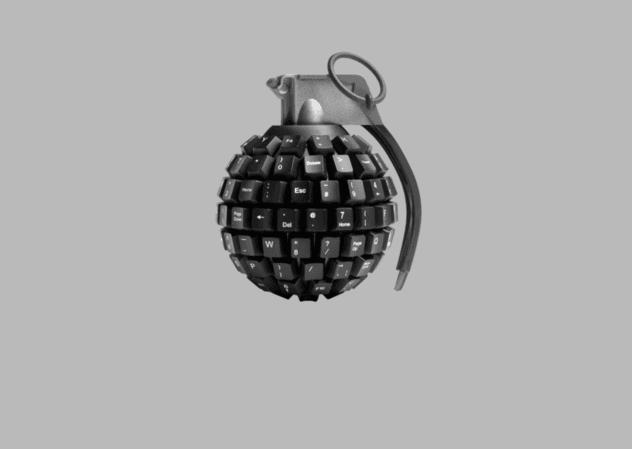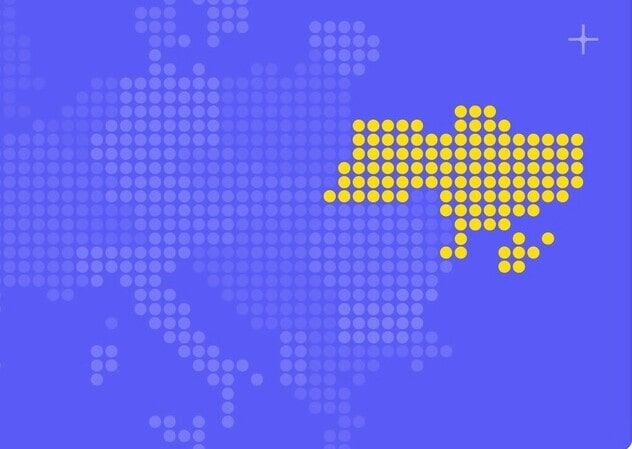Government propaganda in China is a means of manipulating a population in order to make them accept certain views and beliefs. The role of the media in China in spreading propaganda is very common and highly developed. In its attempt to influence the citizens and spread its political message both at home and abroad, the Chinese government uses a plethora of tactics to regulate information.
Knowing how the Chinese regime employs media as an instrument of propaganda is essential for analyzing the social processes and political and international activities of those in power, and it displays why finding a solution for fighting Chinese disinformation is so important.

Overview of Chinese Propaganda
Propaganda in China can be dated back to the imperial dynasties when emperors popularized announcements and decrees for their subjects.
Later, in the modern period, propaganda became institutionalized under the Chinese Communist Party (CCP), particularly since the establishment of the People’s Republic of China in 1949. Mao Zedong once said that ‘the pen and the gun are the two best tools for the CPC,’ reflecting the significance of propaganda in China alongside the force of the arms.
The period of the Cultural Revolution (1966-1976) marked the highest level of propaganda, with mass media mobilization campaigns and ideological slogans and references to Mao Zedong everywhere.
The post-Mao phase was marked by a sophistication of tactics, learning from the media environment, and developments in technology. Modern Chinese propaganda is an intricate combination of the old and the new, of the traditional means of communication and the modern forms of media aimed at preserving the CCP’s monopoly and promoting China to the rest of the world.
Impact on Society Today - How Does Propaganda Impact Society Today?
In a modern landscape, propaganda rolled out by the Chinese government has a great influence on society. At home, search results can manipulate the perception of the population and guarantee political stability by propagating the CCP’s agenda and silencing the opposition. Official media outlets work to create the perception of a united nation, with the government promoting such ideas as China’s justified grievances and successes. It forms a national culture that is pro-CCP, which in essence serves to justify the rule of the party.
Internationally, Chinese propaganda is performed to increase China’s soft power and shape the opinions of the world. In doing this, the government attempts to replace negative connotations and representations, as well as criticisms from the Western media regarding China’s development model and foreign policy. This particular type of strategic communication does not only serve to enhance China’s image but also to change the social context in order to suit China’s geopolitical needs.
Methods of Propaganda
Traditional Media
TV and newspapers are still deemed to be important parts of the larger Chinese propaganda tool. Chinese state media such as CCTV and the People’s Daily are crucial in spreading the messages of the party. These media organizations generate content that is friendly to the government and therefore gives out similar information to that of the government. Stories are formatted and planned in a way that enhances the portrayal of CCP success while at the same time concealing any undesirable incidents or criticism. This is followed by newspapers and magazines which also contain articles that support the government policies and ideological positions. This traditional approach makes sure that a large group of people, especially those in the older age brackets, are constantly fed with state-approved information.
Social Media
It goes without saying that with the help of social media, the CCP has a wider range of propaganda tools at its disposal. Social media platforms are widely popular in the dissemination of propaganda to a broad and inclusive population. These platforms and others are used in various ways by the government; where official accounts spread information and where paid bots and influencers help to promote certain narratives. Being an enormously popular social platform, WeChat plays an important role in both open and hidden propaganda. Government control is also evident in official accounts which disseminate news and updates that correspond to their positions, and private groups and chats are also regulated and controlled to manage the content that circulates in society.
Other popular social media that is being operated in China include Weibo, which is similar to X (Twitter), with the latest trending topics being well-filtered and controlled to suit the policies and teachings of the CCP. Any content favorable to the government is encouraged, any messages that are contrary to them are quickly suppressed or overwhelmed by numerous posts that support them instead.
Examples of Chinese Propaganda
Chinese propaganda campaigns are various and complex, with each having its own goals and target group. One of these is the story of the Belt and Road Initiative (BRI). The government defends the BRI as a mutually beneficial partnership that opens development to participating countries against criticisms of debt-trap diplomacy and geopolitical games.
Another such example is how the Chinese management of the COVID-19 situation has been depicted. Western media exposed China’s fast and efficient actions to contain the virus and its failure at the same time. This narrative did not only affirm the CCP’s competence domestically but also was designed to improve China’s image as a global leader.
Something that has also developed is Chinese-Russian cooperation in propaganda narratives mainly about Western imperialism and criticism of US foreign policies. This cooperation uses both countries’ media outlets to disseminate messages that promote their geopolitical agenda and challenge the Western world. Coordinated Chinese-Russian propaganda poses a big risk to Western stability.
There is a constant negative attitude towards the US in Chinese media, presenting America as a weak country reeling under numerous internal problems and even more aggressive external policies. This narrative is used to divert hostile attention from China and to build up national pride and endurance among Chinese people.
Solutions to Fight Propaganda
All that has been listed above and more are among the reasons why countering Chinese Soviet propaganda and anti-American Chinese propaganda, especially from a state as powerful and as rich in resources as China, is such a difficult endeavor. Nevertheless, it is possible to prevent its influences with the help of several strategies and dedicated tools.
Media Literacy
Firstly, it is necessary to carry out activities that are aimed at increasing media literacy. Increasing awareness of the strategies and objectives of propaganda empowers people to consider the nature of the information they receive and make rational decisions. Media literacy programs should be included in the curricula of educational institutions and regarded as a major component of a population’s awareness.
Media Diversity
Secondly, the independent diversity of media sources needs to be encouraged. Free press and other media outlets offer an oppositional culture that speaks against propaganda and gives more information. This is where supporting investigative journalism and press freedom is important and part of the approach.
Introducing OSAVUL
OSAVUL is one of the most effective weapons against online propaganda, as it is a complex monitoring and analysis system with the purpose of identifying and combating suspected disinformation. In this process, OSAVUL has several characteristics that can be highly useful.
Real-Time Monitoring
OSAVUL monitors traditional and social media in real-time for propaganda and disinformation and reacts by sending alerts and reports.
Comprehensive Analysis
It focuses on the content, trends, and sentiment that helps to detect new stories and evaluate the risk they can pose.
Source Verification
OSAVUL assists in determining true and reliable news sources from journalism to propaganda.
Multilingual Capabilities
Due to the fact that propaganda operates on an international level, OSAVUL facilitates the support of numerous languages for effective monitoring across the world.
Customizable Reports
Users can get descriptive and specific reports depending on the requirements of the case, assisting policymakers and media organizations in their counter strategies.
Conclusion
Chinese propaganda is a broad and diverse concept that affects both internal and external perception to a great extent. The CCP spreads its narratives through both print and electronic media and guides the opinion of the population while promoting the party’s agenda.
It is crucial to get to grips with the techniques and outcomes regarding Chinese propaganda in order to build the best counter strategies. To ensure that people become critical media consumers, independent media outlets are protected, and modern monitoring tools such as OSAVUL are used, it is important to follow these steps. The implementation of everything discussed above can make it possible to reduce the impact of Chinese propaganda and maintain the relevance of real information in the context of digital society by creating a more educated and savvy audience.










